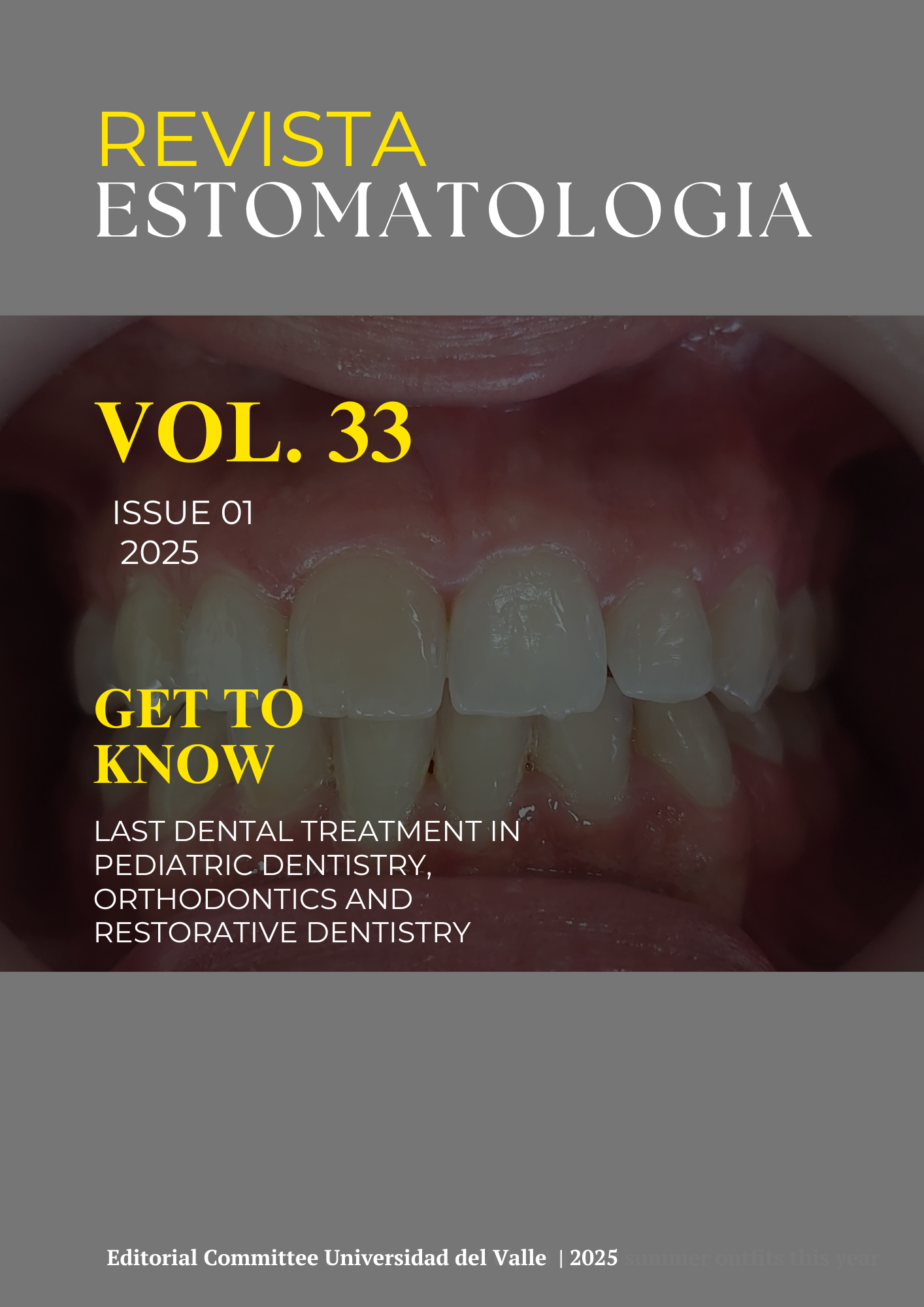Bone grafts: Characteristics, properties, indications, contraindications for predictable bone regeneration - Part 1.
Keywords:
Bone, bone graft, bone substitutes, bone regeneration, guided bone regeneration, bone properties, osteogenesis, osteoinduction, osteoconduction, osteopromotion, osteotransductionMain Article Content
Objective: To perform a systematic literature search to summarize the characteristics, indications and contraindications as well as the requirements to obtain a predictable bone regeneration.
Materials and methods: A systematic search was carried out in databases such as GOOGLE SCHOLAR, LILACs, PUBMED between 2002 and 2024. In addition, a manual search was performed according to the authors' criteria. The articles that met the inclusion and exclusion criteria related to the objective of the present review were selected.
Results: The systematic search yielded 350 articles of which 42 were included in the present review. Bone graft concepts, indications and contraindications as well as clinical requirements for predictable guided bone regeneration were extracted.
Conclusion: Autografts remain the gold standard in terms of regeneration of neoformed bone tissue. Allografts and xenografts have also shown predictable results overcoming the limitation of autografts in terms of availability and lower morbidity.
Hollinger JO. The Biomedical Engineering Series. An Introduction to Biomaterials. Chapter 1: Consensus Definitions, Fundamentals concepts, and Standarized Approach to Applied Biomaterials Sciences; Second Edition, Taylor & Francis Group 2012; pags: 1-3.
Dee KC, Pulelo DA, Bizios R. An Introduction to Tissue Biomaterial Interactions. Hoboken NJ: Wiley-Liss, Publications, 2002. Doi: https://doi.org/10.1002/0471270598
Fillingham Y, Jacobs J. Bone grafts and their substitutes. The bone & joint journal. 2016 Jan 1;98(1_Supple_A):6-9. Doi: https://doi.org/10.1302/0301-620X.98B.36350
Trombelli L. Which reconstructive procedures are effective for treating the periodontal intraosseous defect? Periodontology 2000, Vol 37; 2005: 88-105. Doi: https://doi.org/10.1111/j.1600-0757.2004.03798.x
Brunsvold MA & Melloning J. Bone grafts and periodontal regeneration. Periodontology 2000, 1993, Vol 1: 80-91. Doi: https://doi.org/10.1111/j.1600-0757.1993.tb00209.x
Krakauer JC, McKenna MJ, Buderer NF, Rao DS, Whitehouse FW, Parfit AM. Bone loss and bone turnover in diabetes. Diabetes 1995; 44: 775-782. Doi: https://doi.org/10.2337/diabetes.44.7.775
Takeshita F, Murai K, Iyama S, Ayukawa Y, Suetsugu T. Uncontrolled diabetes hinders bone formation around titanium implants in rat tibiae. A light fluorescence microscopy, and image processing study. J Periodontol 1998; 69:314-320. Doi: https://doi.org/10.1902/jop.1998.69.3.314
CannadaLK. Viable bone and circulatory factors required for survival of bone grafts. Orthop Clin North Am 2010; Jan; 41(1): 5-13. Doi: https://doi.org/10.1016/j.ocl.2009.07.008
Giannobile WV, Rios HF, Lang NP. Bone as a Tissue. Clinical Periodontology and Implant Dentistry. 5th Edition. USA, Blackwell Munksgaard, Blackwell Publishing company 2008; chapter 4; p. 86-94.
Muller SM, Glowacki J. Construction and regulation of 3 - dimensional bone tissue in vitro. En: Bone Engineering. Em squared Incorporated, Canada, 2000. Capitulo 44.
Albrektsson T, Johansson C. Osteoinduction, osteoconduction and osseointegration. Eur Spine J 2001; 10: S96-S101. Doi: https://doi.org/10.1007/s005860100282
Urist MR. Bone: Formation by autoinduction. Science 1965; 150: 893-899. Doi: https://doi.org/10.1126/science.150.3698.893
Urist MR. Bone morphogenetic protein: the molecularization of skeletal system development. Journal of Bone and Mineral Research. 1997 Mar 1;12(3):343-6. Doi: https://doi.org/10.1359/jbmr.1997.12.3.343
Scaduto AA, Lieberman JR. Gene therapy for osteoinduction. Orthop Clin North Am 1999; 30(4): 625-633. Doi: https://doi.org/10.1016/S0030-5898(05)70115-2
Lieberman JR, Daluiski A, Stevenson S, et al. The effectof regional gene therapy with BMP-2 producing bone marrow cells on the repair of segmental femoral defects in rats. J Bone Joint Surg Am 1999 Jul; 81(7): 905-917. Doi: https://doi.org/10.2106/00004623-199907000-00002
Cornell CN. Osteoconductive materials and their role as substitutes for autogenous bone grafts. Orthop Clin North Am 1999; 30(4): 591- 598. Doi: https://doi.org/10.1016/S0030-5898(05)70112-7
Fleming JE, Cornell CN, Muschler GF. Bone cells and matrices in orthopedic tissue engineering. Orthop Clin North Am 2000; 31(3): 357-374. Doi: https://doi.org/10.1016/S0030-5898(05)70156-5
Driessens FCM, Planell JA, Boltong MG, Kharioun I, Ginebra MP. Osteotransductive bone cements. Proc Instn Mech Engrs 1998; 212: 427-436. Doi: https://doi.org/10.1243/0954411981534196
Blom EJ, Klein-Nulend J, Yin L, van Waas MA, Burger EH. Transforming growth factor-βI incorporated in calcium phosphate cement stimulates osteotransductivity in rat calvarian bone defects. Clin Oral Impl Res 2001; 12: 609-616. Doi: https://doi.org/10.1034/j.1600-0501.2001.120609.x
Downloads

This work is licensed under a Creative Commons Attribution-NonCommercial-NoDerivatives 4.0 International License.
Los autores/as conservan los derechos de autor y ceden a la revista el derecho de la primera publicación, con el trabajo registrado con la licencia de atribución de Creative Commons, que permite a terceros utilizar lo publicado siempre que mencionen la autoría del trabajo y a la primera publicación en esta revista.

